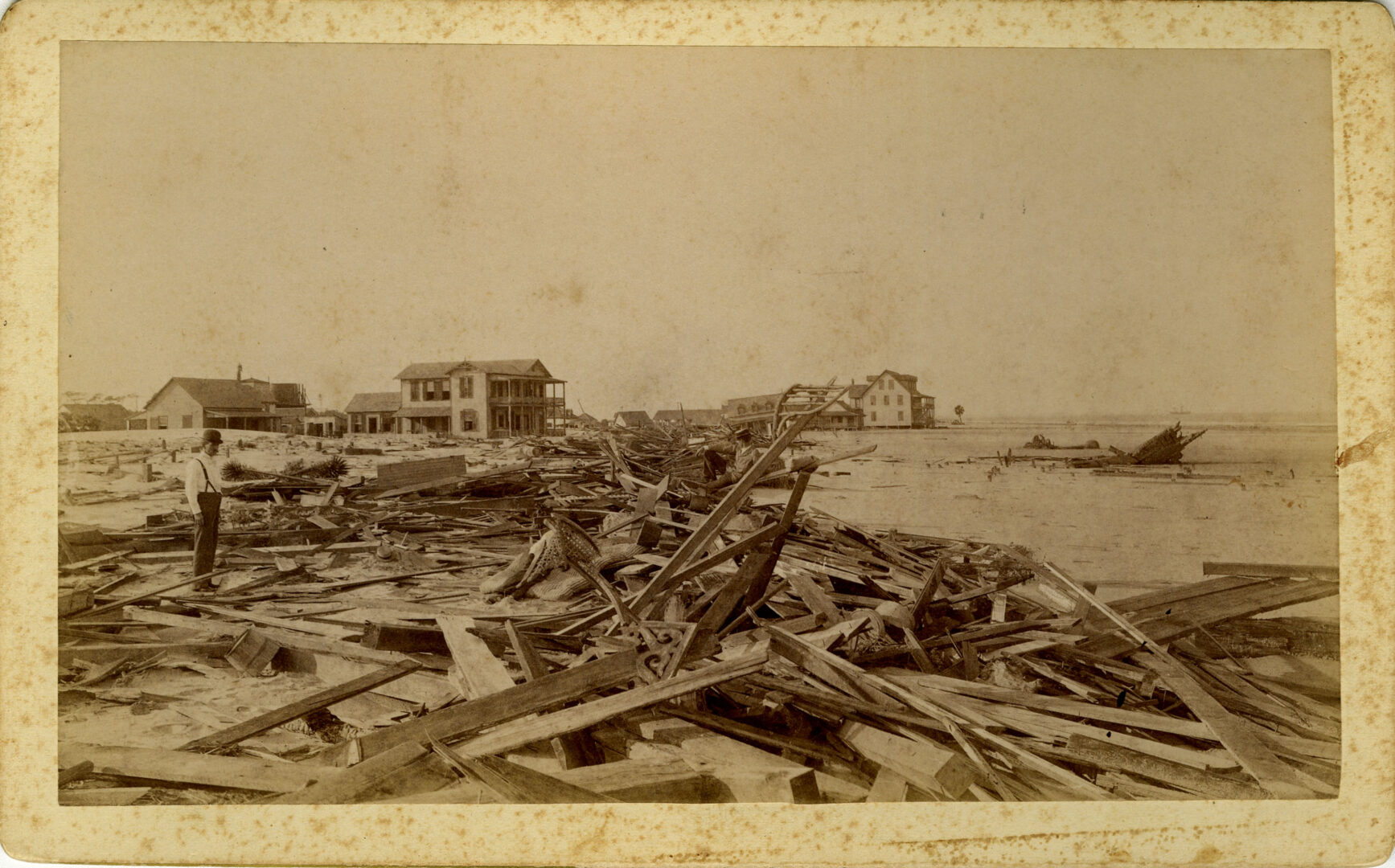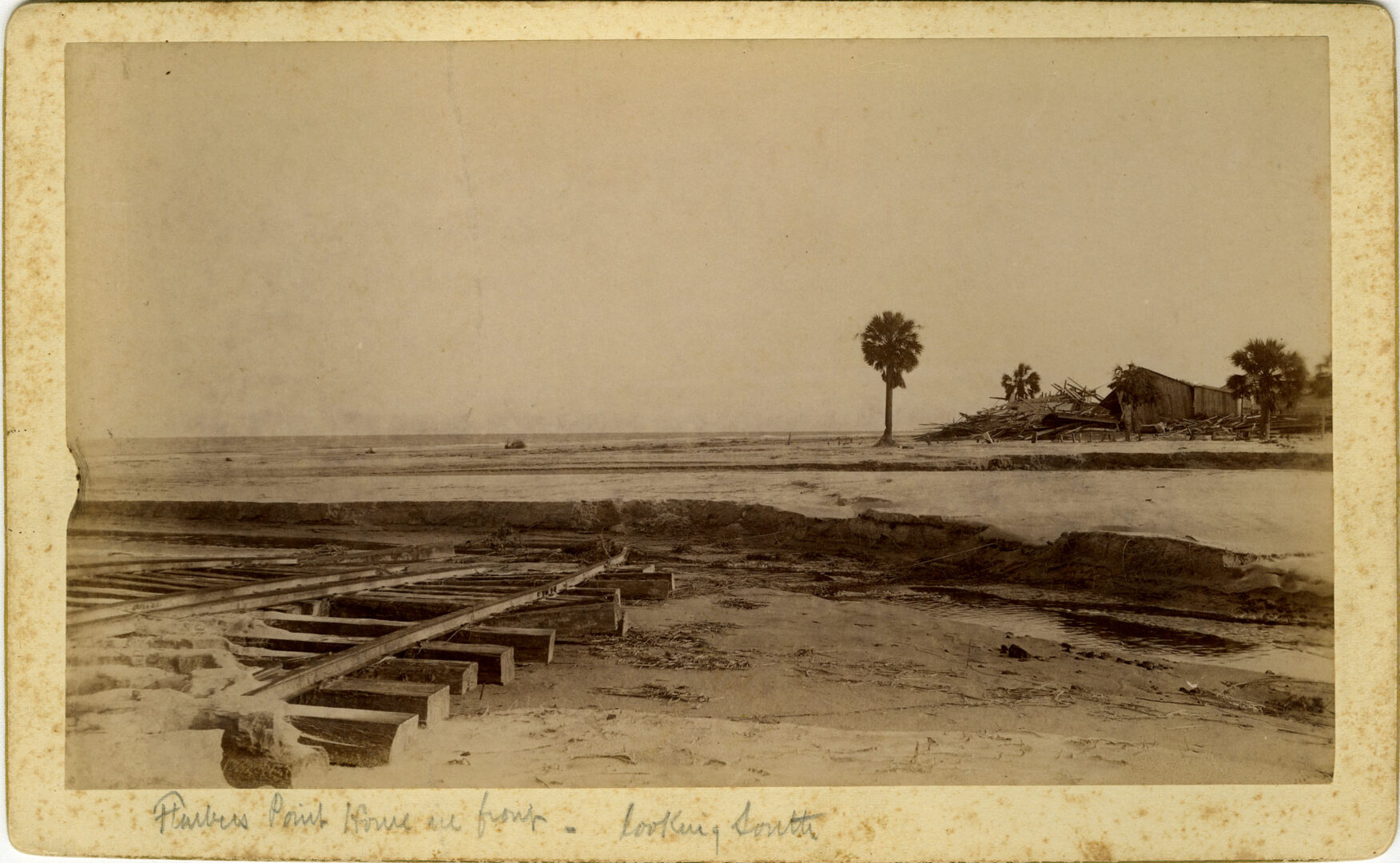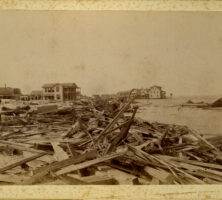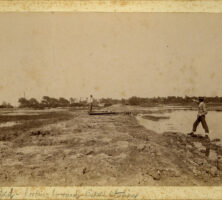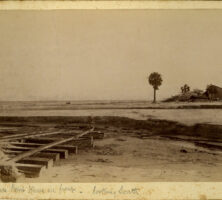One of the deadliest hurricanes in American history made landfall south of Tybee Island near Savannah on August 27, 1893. Now known as the 1893 Sea Island Hurricane, the storm had winds as high as 120 mph and a sixteen-foot storm surge—the equivalent of a Category 3 hurricane on the modern-day Saffir-Simpson scale. The storm devastated the barrier islands of Georgia and South Carolina, killing over 2,000 people and leaving more than 30,000 homeless.
The Warnings
Coastal communities were spared serious damage when a hurricane brushed past the Georgia and South Carolina coasts on August 23, 1893. But their relief would be short-lived. Reports on Friday, August 25, indicated that another hurricane had been sighted 500 miles southeast of Florida and by Saturday, the Weather Bureau had reported swelling at Savannah. Word of the approaching storm spread through Savannah, Charleston, and surrounding coastal towns by telegraph, word-of-mouth, and in some instances, by a new technology called the telephone.
Unfortunately, not all communities received the warnings. Home to more than 30,000 African Americans who farmed, worked in rice fields, and plied nearby waters for fish, oysters, shrimp, and crabs, the Sea Islands were accessible only by boat. Their remote location allowed for the preservation of the unique Gullah and Geechee culture, but limited communication with the mainland—a fact that would carry dire consequences for residents unprepared for the coming storm.
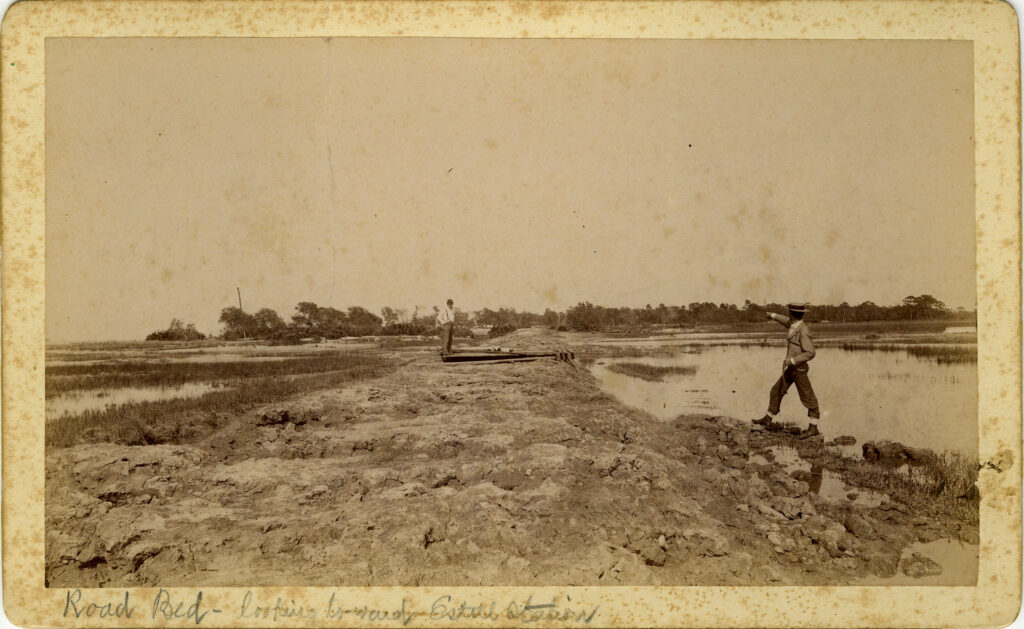
Courtesy of Georgia Historical Society.
Rain began to fall Saturday night, but by Sunday morning there was a lull in the storm. Locals hoped the worst had passed; some even went to church. Rains lashed the coast again that afternoon, however, and by 2:30 p.m., sections of rail from Savannah to Tybee were buried under sand. Further north, Charleston’s streets were under three to five feet of water, with levels reaching up to ten feet overnight. The city’s electrical infrastructure began to fail and by 3 p.m. the Western Union telegraph office was offline. The last message: “Sullivan’s Island has been swept over by a tidal wave and is completely submerged.”
The Aftermath
On Monday morning, the storm began to pass and residents were able to assess the damage. Buildings, bridges, and other infrastructure were demolished up and down the Georgia and South Carolina coasts. The rail lines from Savannah to Tybee were uprooted and mangled. The Savannah Press described structures in a state of utter disrepair, with “roofs of tin peeled off like paper strips.” Ships were wrecked at Savannah, and a schooner washed ashore on Jekyll Island.
It would be another day or two before coastal communities would fully comprehend the devastation as the death toll rose from the single digits to more than 2,000. With telegraph lines still down and most of the bridges and boats demolished, news of the destruction on the low-lying barrier islands began to reach the mainland. Bodies of drowning victims washed up on beaches and were found strewn throughout marshes and in creeks and streams throughout the Georgia and South Carolina Lowcountry. Nearly every building on the Sea Islands was reported to have been destroyed.

Courtesy of Georgia Historical Society.
In addition to the loss of homes, people who relied on agriculture for income found their livelihoods wiped out. Clara Barton and her fledgling organization, the Red Cross, set up a post on the South Carolina coast two months later and began coordinating relief efforts and soliciting donations for residents who were without potable water and threatened by starvation and disease. Racial tensions flared as white mainlanders complained that Black residents on the barrier islands, who were the hardest hit, were getting most of the assistance. It would take residents and relief workers nearly ten months to restore housing and food supplies to the Sea Islands. Economic recovery would take decades longer.
At the time, the Sea Islands hurricane was the most destructive natural disaster in U.S. history, and it remains the deadliest storm to make landfall in Georgia. The state would not experience another direct hit by a hurricane for five years, when a Category 4 storm struck Brunswick, churning a path of destruction across Sapelo and St. Simons islands and inland communities.





